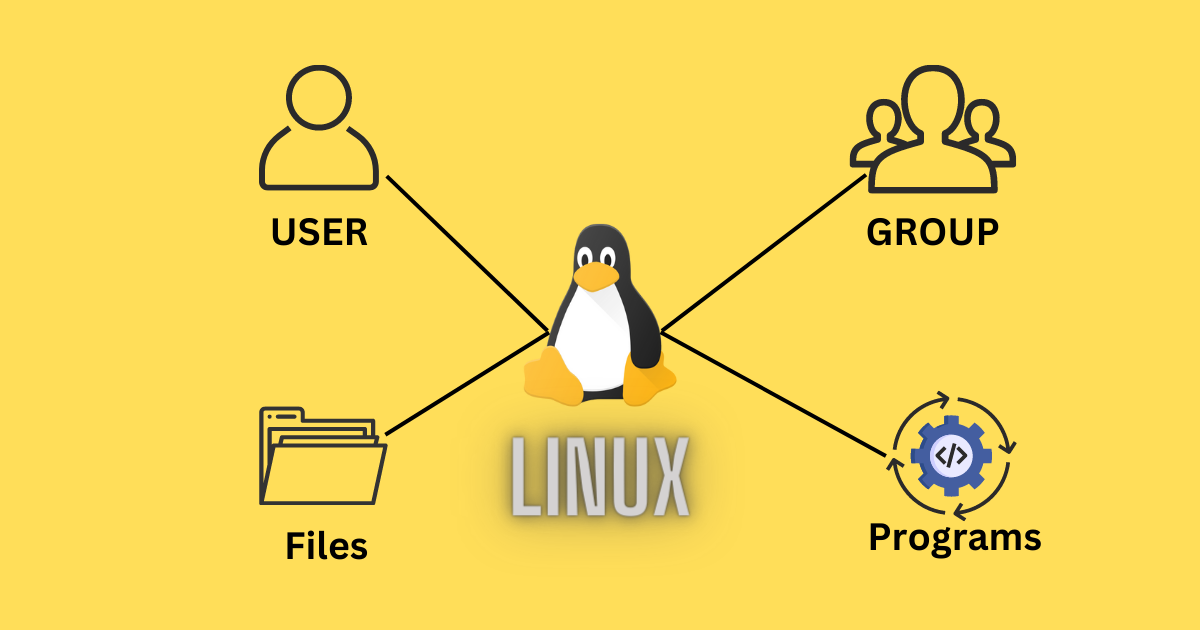Recent studies show that over 70% of Linux administrators think user and group management skills are vital to run systems effectively. Linux’s user management provides the base to enforce access controls and helps keep systems secure.
Basic commands like useradd, usermod, and userdel make user management simple. Remote tasks need extra security measures though. SSH and VPNs have become crucial tools to manage Linux systems from anywhere. Automation tools also help streamline processes when you handle multiple systems.
This piece walks you through secure ways to manage Linux users remotely. You’ll learn the quickest ways to set up strong security and automate user management. The focus stays on keeping your systems secure while you handle user accounts across your Linux setup efficiently.
Setting Up Secure Remote Access Infrastructure
A reliable remote access infrastructure is the life-blood of secure Linux user management. SSH configuration provides the main defense against unauthorized access attempts.
Configuring SSH for Remote User Management
SSH key pairs offer better security than password authentication. The ssh-keygen command generates a 3072-bit RSA key pair. Keep the private key safe in the ~/.ssh directory – attackers with access to it could gain unrestricted system access where the matching public key is configured.
Your SSH setup needs these protections:
- Rate limiting stops brute-force attacks
- No root login access
- Non-standard ports
- Strict mode configurations
Setting Up VPN Access
OpenVPN is the best choice to create secure connections over untrusted networks. Here’s how to set up your VPN:
- Install OpenVPN on both server and client machines
- Create and configure encryption keys
- Set up proper firewall rules for port 1194
- Implement proper routing configurations
A true Virtual Private Network links two trusted endpoints. Users can’t log in from random computers or compromised hosts. This adds another security layer when managing user accounts remotely.
Implementing Two-Factor Authentication
Multi-factor authentication is a vital security layer beyond passwords. Google Authenticator works well for implementing time-based one-time passwords (TOTP) on Linux systems.
Setting up 2FA requires:
- Installing the Google Authenticator PAM module
- Generating unique QR codes for users
- Configuring PAM settings in /etc/pam.d/sshd
- Modifying SSH daemon settings to enable challenge-response authentication
Hardware security modules (HSMs) are great for storing SSH keys. These modules provide tamper-resistant storage that prevents unauthorized access to private keys. Instead of file storage, HSMs secure keys in specialized hardware to add extra protection to your authentication setup.
The combination of properly configured SSH, VPN access, and two-factor authentication creates layered security for remote user management. Each layer brings unique security benefits that make it harder for attackers to gain unauthorized system access.
Essential Linux User Management Commands for Remote Administration
Linux system administrators need a complete understanding of the basic commands that control user accounts and their permissions. These commands help them maintain security and proper access control in their reliable infrastructure.
User Creation and Modification Commands
The useradd command is the foundation to create new user accounts in Linux systems. To name just one example, administrators can create a new user account with specific parameters by running:
useradd -u 1002 -d /home/username -s /bin/bash username
This command sets up an account with a unique user ID (-u), home directory (-d), and default shell (-s).
The usermod command lets you modify existing user accounts. Here are the key options:
- -d: Changes the user’s home directory
- -s: Modifies the default shell
- -e: Sets account expiry date
- -c: Adds descriptive comments
- -u: Changes user ID
- -aG: Adds users to supplementary groups
The passwd command is a vital tool to manage passwords. System administrators can make passwords expire by using:
passwd -e username
Users must change their passwords when they next log in.
Permission Management Commands
The chown command gives administrators control over file ownership. They can change both user and group ownership at once:
chown user:group filename
The -R option works great when you need to change ownership in directories.
The chmod command handles file permissions through symbolic and octal notation. Symbolic notation uses:
- u: Represents user/owner
- g: Represents group
- o: Represents others
- r: Read permission
- w: Write permission
- x: Execute permission
Octal notation uses these values:
- 4: Read permission
- 2: Write permission
- 1: Execute permission
To name just one example, you can give read and write permissions to the owner and read-only access to group members:
chmod 640 filename
The chgrp command changes group ownership of files and directories. Administrators can check permission changes with the ls -l command.
The groupadd command creates new groups, while groupdel removes them. Administrators can add users to specific groups with:
usermod -aG groupname username
This command adds users to extra groups without removing their current group memberships.
The id command is a great way to get user configurations. It shows detailed information about user IDs, group memberships, and associated permissions.
The last command helps monitor user activities by showing login times, terminal usage, and system events. This information helps maintain system security and troubleshoot issues.
Automating Remote User Management Tasks
Linux administrators can simplify their work and minimize human errors by automating user management tasks. Python’s Fabric library is a great way to run remote commands through SSH connections. It gives you a user-friendly interface that makes task automation easier.
Creating User Management Scripts
Bash scripting gives you a strong foundation to automate user management tasks. A well-laid-out script should include:
#!/bin/bashif [[ $(id -u) -ne 0 ]]; then echo “This script must be run as root” exit 1fi# Function for logginglog_message() { echo “$(date ‘+%Y-%m-%d %H:%M:%S’) – $1” >> /var/log/user_management.log}
The script checks for root privileges and logs all operations to track changes. Adding error handling makes the script more reliable during execution.
Implementing Automated User Provisioning
Automated user provisioning helps you create accounts, set access privileges, and assign roles using predefined templates. Here’s how to set it up:
- Create a secure password generation function:
generate_password() { tr -dc ‘A-Za-z0-9!@#$%^&*()_+=-‘ </dev/urandom | head -c 16}
- Set up directory structure:
mkdir -p /var/securechmod 600 /var/securechown root:root /var/secure
- Store generated passwords securely in /var/secure/user_passwords.txt.
Setting Up Scheduled Tasks
Cron is your go-to tool for scheduling automated user management tasks. The cron daemon reads the crontab file and runs commands at specific times. To name just one example, you can schedule user account cleanup:
# Run daily at 11 PM0 23 * * * /path/to/user_cleanup.sh
Crontab syntax lets you control exactly when tasks run, so you can automate routine maintenance.
Error Handling in Automation Scripts
Good error handling makes scripts reliable and easy to maintain. Here are the key practices:
- Use the $? variable to check command execution status
- Enable debug mode with the -e option
- Add custom debug functions
- Send errors to dedicated log files
Here’s a practical error handling example:
#!/bin/bash
# Debug function to print timestamped debug messages to stderr
debug() {
local timestamp=$(date '+%Y-%m-%d %H:%M:%S')
echo "$timestamp - $1" >&2
}
# Error handler to capture line number and exit with the last command's exit code
handle_error() {
local exit_code=$?
debug "Error occurred in script at line $1"
exit $exit_code
}
# Trap ERR signal and call error handler with line number
trap 'handle_error $LINENO' ERRThis setup gives you detailed error tracking and response mechanisms. System administrators can use these automation strategies to manage user accounts on multiple Linux systems efficiently without compromising security or reliability.
Monitoring and Auditing Remote User Activities
User activity monitoring plays a vital role in Linux system security. The Linux Audit system tracks security-related information that helps administrators spot policy violations and unauthorized access attempts.
Setting Up User Activity Logging
The Linux Audit system creates detailed log entries based on preset rules. These entries track file access, changes, and command executions. Here’s how to set up strong user activity logging:
- Configure Process Accounting:
# Install process accounting toolsdnf install psacct # For RHEL/CentOSapt install acct # For Debian/Ubuntu
Process accounting tools keep track of every command users run, plus CPU and memory usage stats. You’ll need to enable the service after installation:
systemctl enable psacctsystemctl start psacct
The auditctl utility lets you manage kernel audit rules. You can track password file changes like this:
auditctl -w /etc/passwd -p wa -k passwd_changes
This command watches write access and attribute changes to the /etc/passwd file.
Your audit rules should survive system reboots. Store them in /etc/audit/rules.d/audit.rules. The augenrules program loads these rules when your system starts up.
Implementing Access Monitoring Tools
The psacct package gives you great tools to monitor users:
- ac: Shows how long users stay connected
- lastcomm: Lists commands that were run
- sa: Gives you a summary of command execution
- dump-acct: Makes accounting data readable
Here’s what you need to do to boost security monitoring:
- Centralized Log Management: Unite logs from different systems to spot threats more easily.
- Configure Log Rotation: Set up smart log rotation rules to save space while keeping important audit data.
- Enable Fail2ban: This tool watches SSH logs for failed logins and blocks suspicious IPs.
The Linux audit framework includes ausearch and aureport for up-to-the-minute monitoring. ausearch helps you find specific log entries, while aureport creates detailed daily event reports.
Want to track software installations? Set up audit rules for package managers:
# Monitor package installationsauditctl -a always,exit -F exe=/usr/bin/dnf -S execve -k software_install
This rule tracks all package installations through the DNF package manager.
You can get better insight into user sessions by:
- Looking at login/logout events in /var/log/auth.log
- Checking SSH connection attempts with grep sshd.*Failed /var/log/auth.log
- Using DenyHosts to control SSH access
The pam_faillock module records failed logins and provides context about unauthorized access attempts. Make sure users can’t mess with audit logs by setting proper file permissions and sending logs to a dedicated server.
Daily review of audit reports helps you spot suspicious patterns and potential security issues. System administrators should check these reports every day and investigate anything unusual that might show unauthorized access.

Troubleshooting Common Remote Management Issues
System administrators face technical challenges when managing Linux users remotely. A systematic approach to troubleshooting helps maintain uninterrupted access to Linux infrastructure.
Resolving Connection Problems
Network connectivity problems can disrupt critical services and make remote user management difficult. Here’s how to diagnose these problems:
- Use network diagnostic tools:
- ifconfig and ip commands to check network configurations
- ping external servers to find network bottlenecks
- traceroute to locate problematic network segments
Check your firewall configurations first because wrong rules often block important traffic. Look at physical network components and pay attention to cables and switches that might have faults.
Fixing Permission Errors
Wrong access rights or ownership settings usually cause permission denied errors. The first step is to look at specific error messages and system logs in /var/log/syslog or /var/log/auth.log.
These steps will help you troubleshoot:
- Check file permissions with ls -l
- Look at user ownership and group memberships
- See available disk space using df command
- Review network configurations for remote access
These commands help fix permission issues:
chmod u+x file.txt # Adds execute permission for file owner
chgrp admins file.txt # Assigns file to admins group
sudo apt update # Runs updates with elevated privileges
Handling Authentication Failures
SSH connection issues or failed login attempts point to authentication problems. When you see “Too Many Authentication Failures” errors, try these solutions:
- Add the SSH identity file path in login commands
- Set SSH key permissions with chmod 600
- Set up the ~/.ssh/config file for easier connections
The MaxAuthTries value in /etc/ssh/sshd_config helps manage failed login attempts. Be careful though – too many allowed attempts can create security risks.
You can improve authentication security by:
- Setting SSH logging to LogLevel DEBUG
- Watching /var/log/auth.log for failed login patterns
- Adding rate limits to stop brute-force attacks
Fix expired accounts with:
chage -E -1 username # Unlocks expired account
pwconv # Recreates shadow file entries
Good log rotation policies will help manage storage while keeping important authentication data. A careful look at system logs and these troubleshooting steps will help administrators restore remote access quickly.
Conclusion
Linux user management for remote systems needs careful attention to security, speed, and reliability. System administrators can build strong defense layers against unauthorized access by setting up SSH correctly, using VPNs, and adding two-factor authentication.
Managing user accounts becomes easier with command-line tools that handle permissions and group memberships on Linux systems. These key commands work well with automation scripts and scheduled tasks to cut down on admin work while keeping security tight.
Complete monitoring and audit tools let admins track what users do, spot security issues early, and stay compliant with requirements. Linux audit systems combine with process tracking tools and central logging to show everything happening in the system.
A step-by-step approach helps solve common problems with connections, permissions, and logins. Knowing these challenges and their fixes will give admins minimal downtime in remote management.
Admins who become skilled at using these concepts and tools can run secure and reliable Linux systems effectively. Working regularly with these methods makes operations stronger and boosts system security.









